A dream destination for many adventurers, the Italian islands are a wonderful European cruising ground to explore.
Italy has hundreds of islands to choose from. They make sailing the country a unique experience, not for the exhilarating sailing, but as a treasure hunt for captivating history, culture and food in beautiful surroundings. The biggest one, Sicily (the one ‘being kicked by the boot’), is home to 5 million people and is also the largest island in the Mediterranean Sea. It is closely followed by Sardinia to the north, which only has a third of the inhabitants. You can easily spend months on either island and given that they are easily reached with low budget flights from many European cities, don’t be surprised if you get lots of visitors.
- Filicudi Island in the Aeolian Archipelago
Sicily
The triangular island of Sicily has got sides of about 160 NM in length and can be mistaken for a separate country. Italians and Sicilians alike do not think they belong to the same tribe, in fact their dialect is difficult to understand, they add an African touch to the famed Italian cuisine and have unique specialties (such as ice-cream in a bun!).
Sicily has active volcanoes, the famed Messina Strait, a very rich cultural history and the bustling capital of Palermo. Personally I think the Sicilian climate is the best in Italy and Sicilians the most welcoming, perhaps there is a relationship? I don’t know a cruiser who didn’t love their Sicilian adventure.
The main cruising sights are on the north coast, from the Aeolian islands in the north-east to the Aegadian islands to the north-west. You can spend months on that 160 NM stretch hopping amongst the islands, going along the coast and taking the occasional trip inland. You must prepare yourself for deep anchorages and some swell both on the islands and the “mainland” due to the absence of protected coves. Luckily there’s generally hardly any wind so chances are it turns out fine.
The Strait of Messina, between mainland Italy and Sicily, can be sailed in either direction but should be approached with care given the wind and currents. You can watch our experience of making the passage to see the conditions and Sicily’s north coast for yourself.
On the south coast there is much less to see but it does include two of the most popular wintering harbours in Italy: Licate and Ragusa. For those used to the marine traffic in the north of Europe, it is not a busy area and I truly believe the towns of Siracusa and Taormina are not to be missed.
- The top of Vulcano
- Icecream in a bun in Levanzo
- Scalo Maestro, Marettimo
Sardinia
The rectangular island of Sardinia is about 150 NM by 50 NM, with its southern point being closer to Africa than Italy. It is the land of sheep and the famous ‘pecorino romano’ cheese, which is actually produced here, not in Rome.
Life in Sardinia is laid back and relatively cheap. We found that locals are friendly to tourists despite being overrun in summer and it’s pretty organized: cars even stop for pedestrian crosswalks which is rarity in Italy! Sailing boats are mostly found on the east coast, with it being closest to mainland Italy. In high season the translucent waters become a famed holiday spot for Italians, in particular Maddalena Archipelago to the north-east and Carloforte to the south-west.
Italian harbors are generally quite expensive and Sardinia hosts some of the most expensive ones on its north east coast, including Porto Rotondo and Porto Cervo. Surprisingly though, if you are looking for a place to leave the boat in the off-season these become cheap options. During that period, the capital Cagliari (home base of Luna Rossa, the Italian America’s Cup contender) on the south coast is the most popular place for cruisers to base themselves.
During our trip around the island in 2022 we sailed anti-clockwise to take advantage of the prevailing winds. If you do choose to visit Sardinia I strongly suggest you don’t miss Bonifacio (Corsica) on the northern side of the Straight. Crossing the Strait of Benofacio in summer poses no difficulty as long as you avoid strong westerlies.
- Tharros Necropolis in Sardinia
Islands in Tuscany, Lazio and Campania
When sailing the west coast of Italy you will also come across islands in Tuscany, Lazio and Campania. Elba in the Tuscan Archipelago, Ponza in Lazio’s Pontine Islands and Capri in the Campanian Archipelago are fine to visit if you pass by on your way south, but by themselves are not big enough as a season long cruising destination. That said, the biggest one, Elba, is a nice island to circumnavigate.
The islands off Rome and Naples are a welcoming break if you decide to visit these two magnificent cities, but be warned, that’s also what the local population thinks! Capri in particular is really very busy and full of anchoring prohibitions to be aware of.
- Palmarola is the second largest island in the Pontine Islands
Navigational information for the Italian islands
The traditional pilot book is Italian Waters by Rod & Lucinda Heikell, yet I prefer the Mediterreanen Sea series by Luca Tonghini as they are more detailed and up to date. It is common that rules change every year and even those of us living in Italy have a hard time figuring out where we are allowed to anchor, whether we need a permit and how to get it. This is actually something that may benefit from NFLs recent addition of ‘community posts’ allowing you to check the current rules.
Many places have a special ‘Area Marina Protetta’ (both Sicily and Sardinia have five such AMPs protecting the environment) in addition to local regulations, such as that in summer anchoring is prohibited within 200m of a beach. There is quite a good chance that this will get checked so make sure you measure it.
The NFL map is pretty complete regarding Italy so it shouldn’t be a problem finding the right spot. Do check what kind of boat the reviewer sails since places like the bay of Gonone (where you can visit caves) on the east coast of Sardinia is notorious for swell and easily becomes uncomfortable for monohulls, but less so for catamarans.
- Cala Gonone, Sardinia
Practical information
Thinking back over our experience sailing the Italian islands, here are some practical tips to keep in mind.
- To cruise Italy, at least to enter a harbour, you need a third party insurance and, if you are an EU-boat, proof of VAT paid. There is no general cruising permit in Italy but when an AMP is applicable there is usually an anchoring fee attached.
- During the high season (which runs from mid July to mid September) the Italian harbours are (very) expensive. In case you do not have a watermaker, try to find out beforehand where you can take water. Sometimes there is a cheaper town quay that is connected to the water system. Alternatively, take water at fuel docks. Generally though, Italians do not drink the water out of the tap.
- The cruising season runs from April to October, with the south coast of Sicily being the warmest. The water temperature changes quite a lot so if swimming is your thing then plan your cruising itinerary accordingly. Italy basically shuts down in the two weeks mid August for summer holidays which coincides with peak season. In other words, try to find a place to hide like the less visited west coast of Sardinia or the south coast of Sicily.
- It is said that in the Med there are two kinds of boats: motorboats with masts and motorboats without masts. It is true that there is little wind in summer but at the end of July and August the warmer sea temperatures give rise to vicious thunderstorms. Given the prevailing winds there is a saying that if you want to circle the islands you should do it counter-clockwise. Roberto Ritossa has written Mediterranean Weather Handbook for Sailors on the Med’s particular weather features.
- You are going to have a garbage problem. All over Italy garbage is collected house to house so garbage containers are only found in harbours and if you aren’t moored there you may be asked to pay 5 Euro a bag. We ended up going around villages with small plastic bags dropping them in whenever we saw a ‘tourist-bin’.
- Cleaning winches in Portoferraio, Elba
- Monte Capanne with view on Marciana Marina, Elba
Buon Vento!
The Italian islands offer the opportunity to have some truly wonderful experiences and are well worth visiting. If you have any recommendations or insider’s tips be sure to share them in the comments below, I’d love to read them!

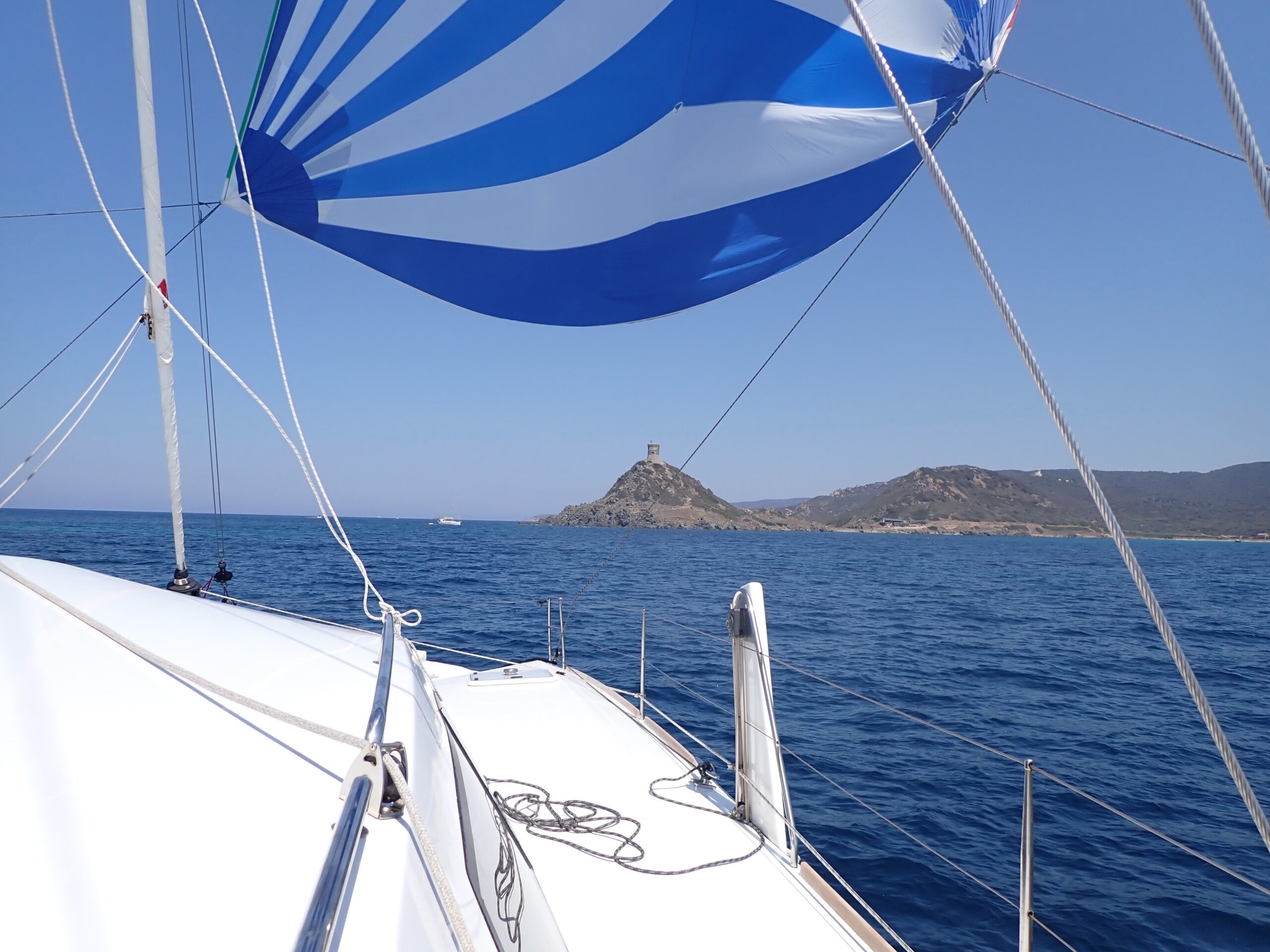

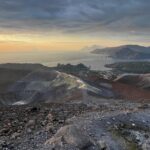
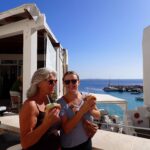
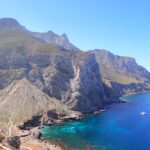
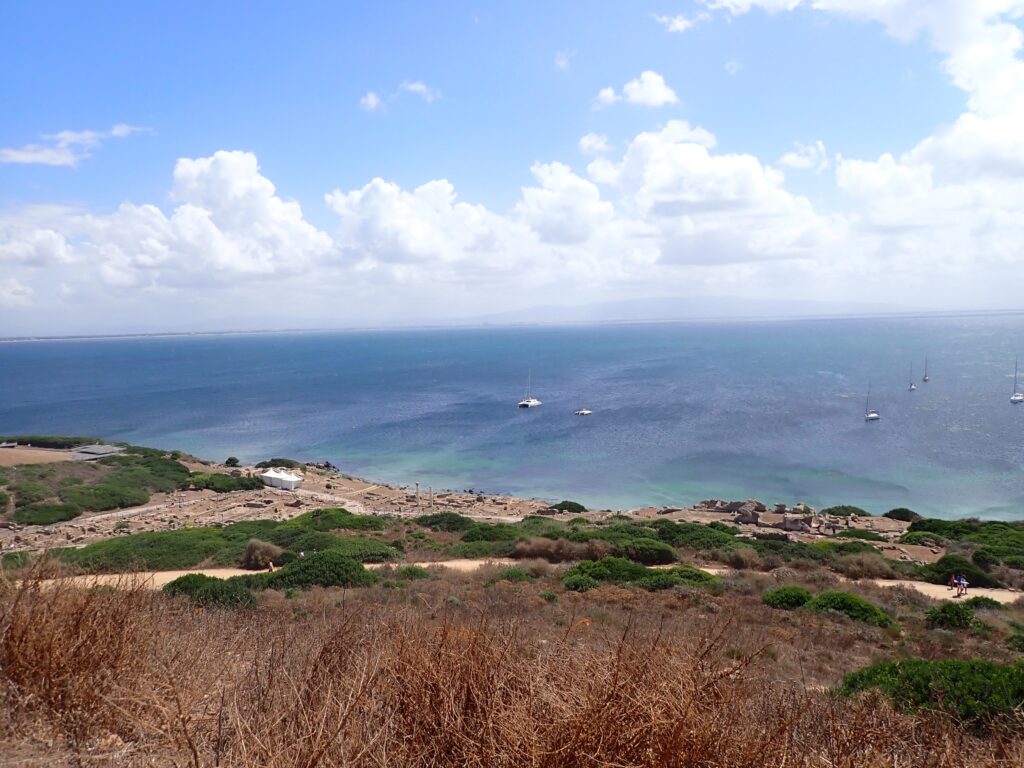
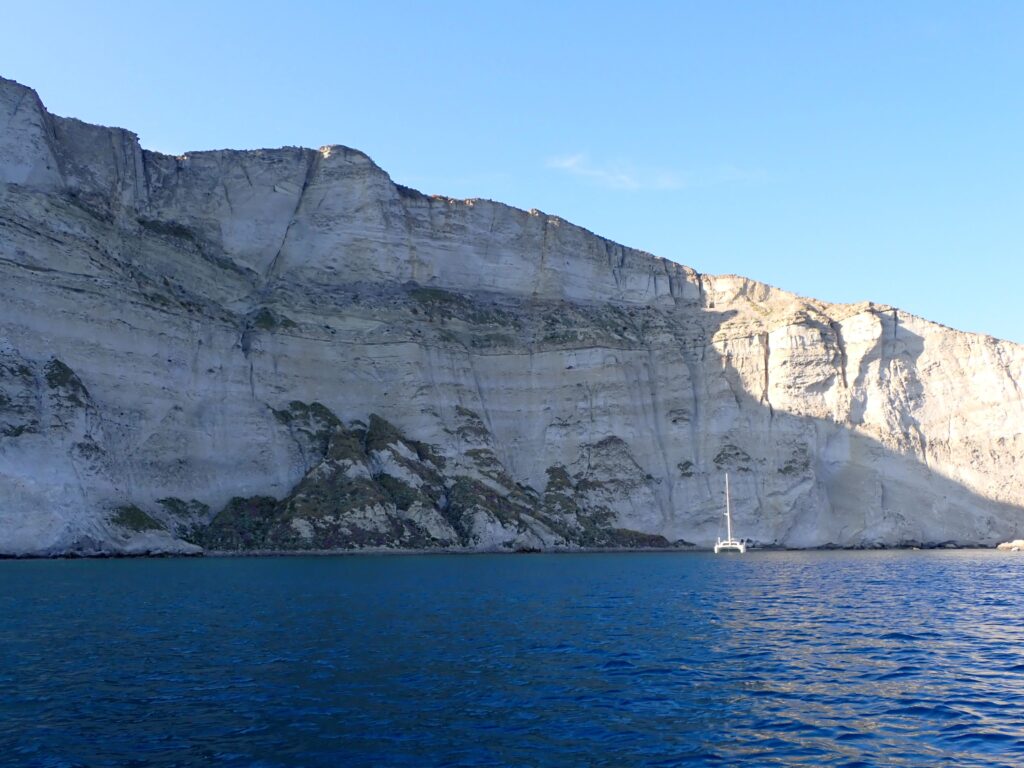
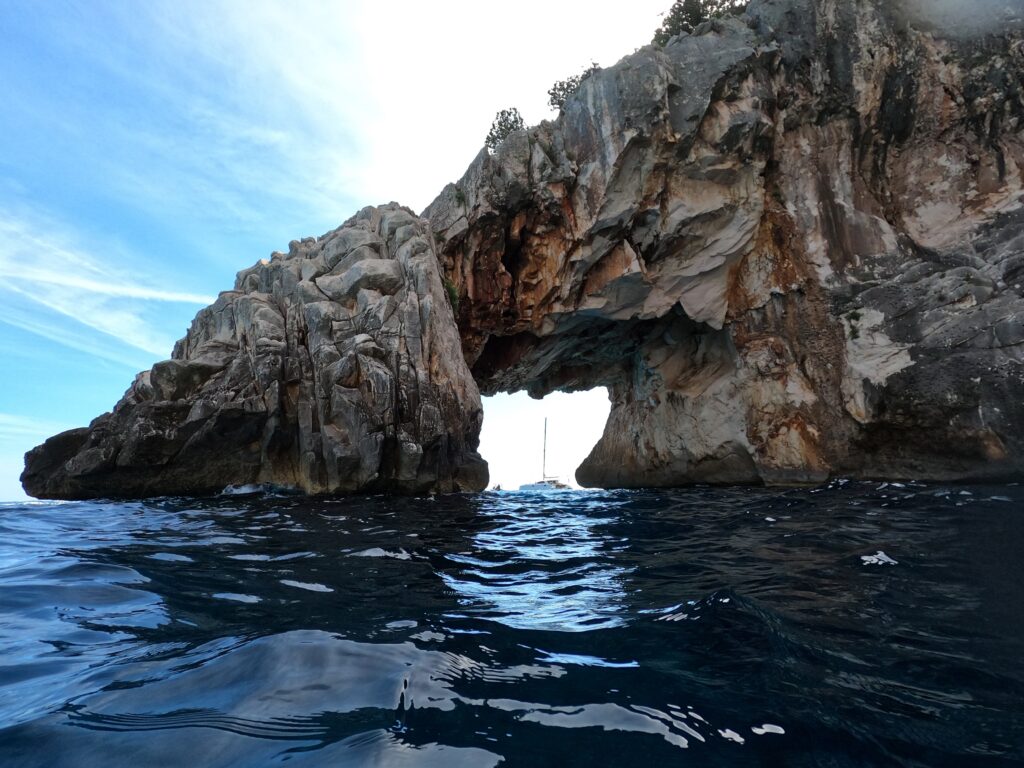
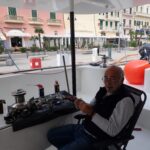
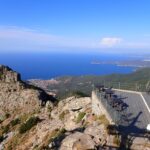


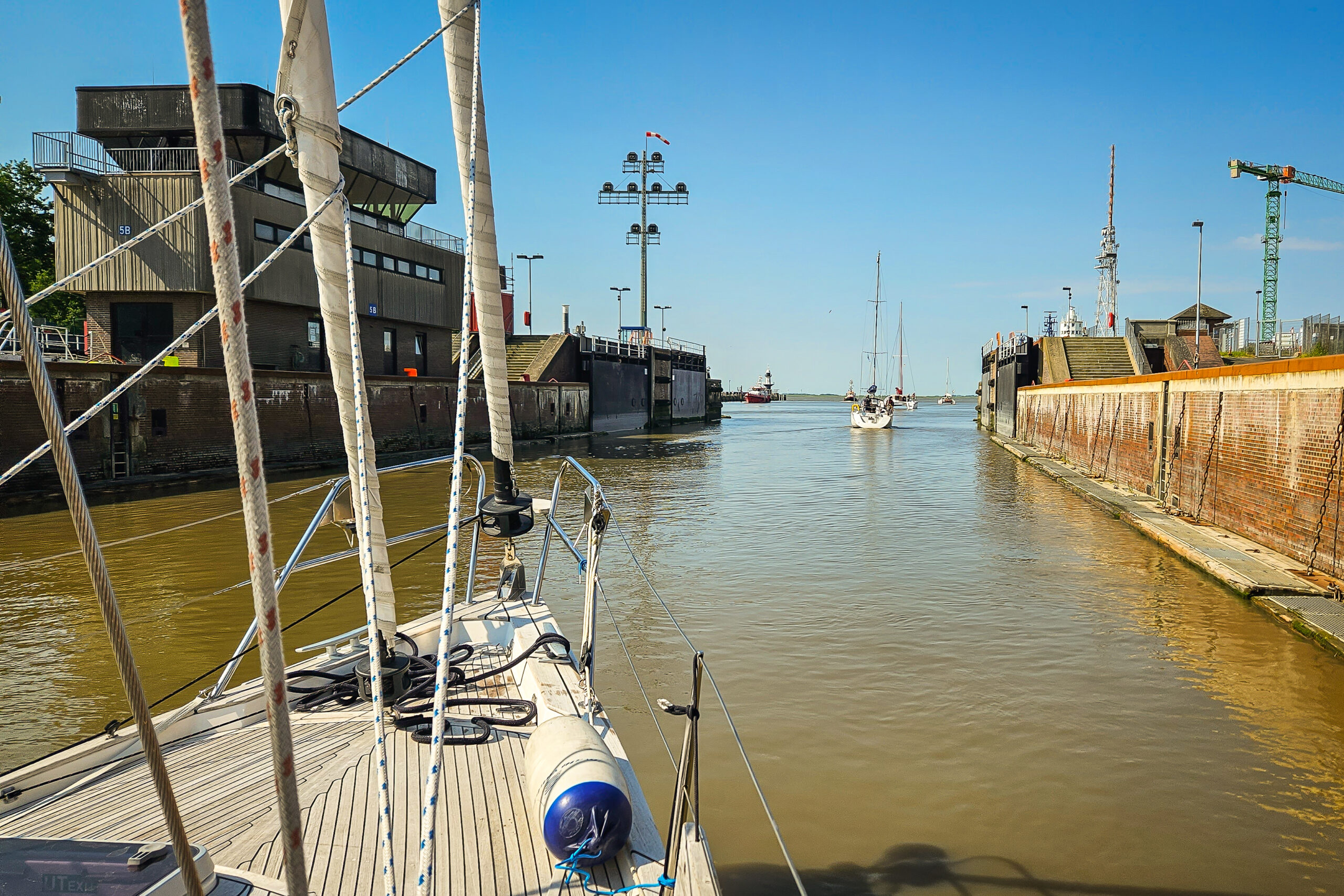

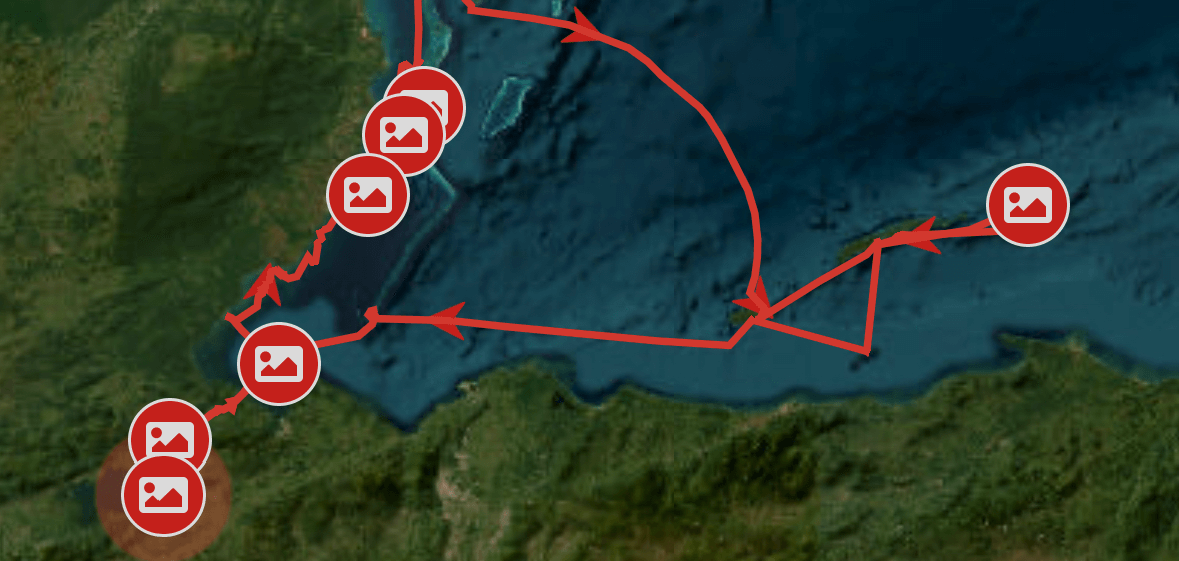
Datter,
Vi er stolte over at du skriver, og skriver godt! Din artikel får os til at genoplive vore år i Italien, sejlende i jeres båd og i Dino. Dine oplysninger om steder at besøge er meget korrekte og må være hjælpsomme.
Dine forældre,
der også sejlede langs syd og øst kysten af det pragtfulde Italien, inklusive Venedig.